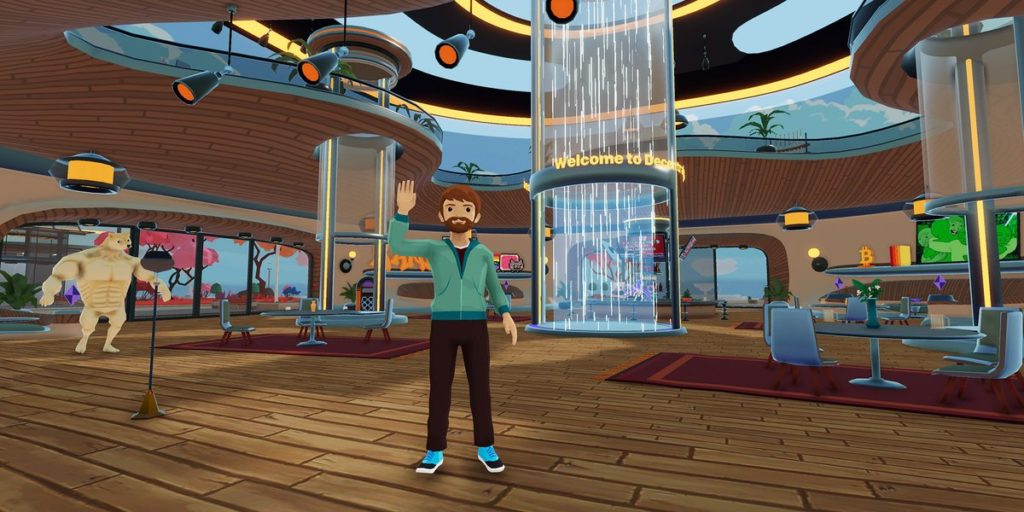What is the Metaverse and why should you care?
The latest hype in the tech world is the Metaverse. The grandest ideas in Tech usually have this lifecycle. It starts as a novel and unique idea that casually gains traction and becomes a buzzword. Incomprehensible jargons pop out from all places usually underexplained and overused. Innovators and tech enthusiasts talk a lot around the buzzword cloud, deploy their own jargon and loosely related topics around it, and finally in a rare turn of events, these terminologies merge and become a semi-comprehensible entity.
Jargons are thrown around, buzzwords make the headline. Finally, in a rare turn of events, the alphabet soup cloud(?) condenses and out of the fog comes an entity.
Then we get sucked into it and live our lives within that thing forever. This, I believe, was the case for the Internet. Now get ready for the next pumped-up evolution of the Internet, the Web 3.0, which may (or may not be) the Metaverse.
If you’re a science fiction fanatic like me, you’d know science fiction is the birthplace of all the novelties of modern technologies, such as the cellular phone, hologram, Virtual Reality, and lightsabers. The term Metaverse was coined by the writer Neal Stephenson in his 1992 novel, “Snow Crash”. It referred to a fully realized world analogous to the real world but in the digital sphere. And when it comes to the digital sphere, the possibilities are limitless.

Before we dive into the little intricacies and nuances of the Metaverse, let’s get our basics checked first. The start of the Internet, also known as Web 1.0, was mainly a collection of static webpages created by early adopters. Eventually, with more sophisticated programming and through the collective effort of web-devs, Web 2.0 came into being. A dynamic world full of user-generated content, interoperable, and a place for social participation. Tim Berners Lee, the founder of the Internet, described it as a “read & write” web. Blogs, forums, social media, and video streaming gained momentum during Web 2.0. Facebook became Facebook in Web 2.0.
The biggest catch of Web 2.0 is that the server owner controls the database.
This is how most tech giants became such behemoths, through the control of users’ personal data, finding ways to use it, and eventually monetize it.
Now Tim Berners Lee hints that Web 3.0 is the ‘read-write-execute’ web. A change in the fundamental aspect of how we navigate and behave in the world wide web. Metaverse is the prodigal son of this new web. Meta, the latest brainchild of Zuckerberg, promises to be a digital world where you roam as an actual three-dimensional being following most of the physical world’s properties but with little twists. The digital sphere is VR-enabled. From offices, concerts, art exhibitions, auctions, you name it. Meta covers the whole spectrum. This is based on the underlying concept of ‘execut[ing]e’ the feature through which you can sign contracts and have digital ownerships.
Did someone say digital ownership?
The hype around metaverse is fueled by founders, innovators, futurists, and investors who are all trying to claim their stake in it.
This is only possible due to the existence of digital ownership. A potential way for social connection, experimentation, entertainment, and the most lucrative of them all for profit. Digital ownership comes in the term of NFT, Non-Fungible Tokens that allow you to own digital pieces in a special time-stamped way. Web 2.0 is clouded with pirated copies and copies of those copies which have been frowned upon by artists and innovators all alike. But metaverse offers a world free of piracy which to be honest is a big deal. Right now the art world is thriving on NFTs. From Beeple to Banksy the market is on fire. Now if all these sounds too overwhelming here are some pointers to clear out the air around metaverse.
- It supports real-time 3D computer graphics and personalized avatars
- It supports users creating their own virtual items and environment
- It has its own economy and can be linked with an outside economic system for digital goods
- It’s a virtual space where you can create and explore with other people who aren’t in the same physical space as you.
Now what do you exactly do in the Metaverse?
You put on your VR, you choose the world, you create your avatar and baam you’re in! Just roam around and be amazed or just stare at a mirror (it’s a metaverse thing). Meet new people, make friends, roam around the world’s and if you’re lucky you might even catch a party or a concert. If that’s not your thing they also have art galleries. Actiual 3 dimensional moving art pieces. And so many games. (Not enough though)
Well, why the wait?
A full-fledged metaverse might be years, if not at least a whole decade away.
There are still plenty of technical hurdles to overcome, starting with the fact that the world doesn’t have an online infrastructure that could sustain millions (or even billions) of people using the metaverse at the same time. Only time will tell when the stepping into the first true metaverse will be reality – but when you do, I’ll see you there.